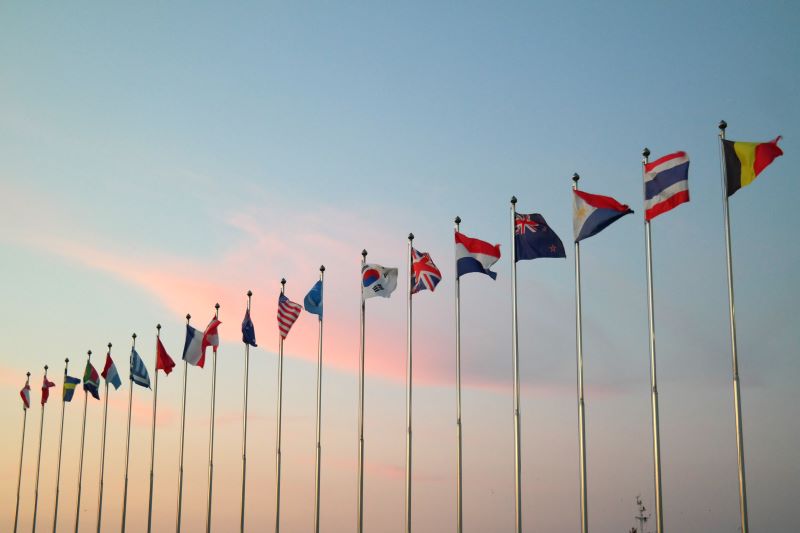Recommended


POLICY PAPERS

POLICY PAPERS
Two years ago, we began a research project that aimed to explore the relationship between the development cooperation agencies of countries in the OECD’s Development Assistance Committee (DAC) and those outside of it (non-DAC) development cooperation providers. We started by questioning whether the shifting development landscape had accelerated progress towards a new—and “global” —paradigm for development. At the time, the acute and simultaneous global challenge faced by the COVID-19 pandemic had given way to early optimism, with some pointing to examples of “multi-directional” transfers—where assistance flowed from “South” to “North” as well as in reverse or within these groupings—as a signal of a potential shift. While this optimism waned quickly as self-interest and competitive pressures dominated international pandemic responses, it had already given rise to important questions about how we can build stronger cooperation to not only respond to acute global crises, but to deliver on existing global commitments.
As our project draws to a close, we reflect on the main lessons we learned about how DAC and non-DAC providers cooperate; the challenges facing cooperation for development; and the opportunities for moving beyond the barriers to deeper cross-provider partnerships. In addition to providing a brief summary of key findings from each of our research papers, we argue that despite the many challenges that constrain the likelihood and opportunities for cross-provider cooperation, there is value in thinking about how providers can take even small steps towards building common standards, practices, and spaces that reflect the realities of an increasingly multipolar development landscape.
Project overview
In order to understand the extent to which DAC and non-DAC providers cooperate to advance development outcomes, and how such cooperation could be improved, we undertook four studies. Each explored different aspects of the barriers to, and opportunity for, relations between DAC and non-DAC cooperation providers.
Our first study, which was conducted in the wake of the COVID-19 pandemic, explored how non-DAC countries contributed to the pandemic response, and whether the global and acute nature of the crisis had meaningfully accelerated transitions towards a more “global development paradigm”. To do so, we mapped the scale and scope of international financial, technical, and policy responses to COVID-19 across countries. We found that while a diversity of actors contributed to international COVID-19 responses, the transition towards a global development paradigm had not yet materialized. Instead, evidence of non-DAC leadership and “multidirectional” transfers, including South-South and South-North flows as well as “traditional” North-South assistance, sat alongside competitive pressures and national self-interest, with both DAC and non-DAC countries often engaging bilaterally, or through separate international spaces.
Our second paper dug deeper into the diversity that characterizes the non-DAC cooperation landscape, to understand which countries have agencies responsible for providing regular outward cooperation, what these providers do, and how “open” they are to cooperating with other providers on development issues. To do so, we conducted a broad mapping exercise that identified 54 non-DAC providers and probed their key objectives and modalities for development engagement. This mapping was complemented by five in-depth case studies on the historical development of select non-DAC providers’ cooperation programmes, and introduced a novel framework for identifying differences in the willingness, or “openness”, of non-DAC providers to partner with other providers through shared development spaces and activities. While we found that most non-DAC providers are at least partially “open” to partnering with other providers—including DAC members—there questions about how such openness can be transformed into more active cooperation—if not deeper collaboration—to advance development outcomes.
Our third paper focused on understanding the barriers to deeper cooperation between DAC and non-DAC providers on development issues, and how to overcome them. Using a combination of survey and interview data, we highlighted four key barriers to cooperation: differing principles and visions of cooperation, lack of capacity, low political appetite, and crucially, a lack of trust. To overcome these challenges, interviewees stressed that providers will need to invest time and energy in rebuilding trust and should aim to co-create development norms and standards that better reflect the realities of the current provider landscape.
Based on the understanding that low trust and fundamental differences in the principles and visions of cooperation currently limit cross-provider engagement, our fourth paper explored the potential for well-positioned countries to act as “bridges” across the DAC/non-DAC divide. We conducted a literature review to examine why, when, and under what conditions countries choose to act as bridges and identified the different “types” of bridging roles and functions that countries can choose to pursue. While bridging is not a panacea and incurs both potential risks and benefits to the bridging country, actors that are well positioned to leverage diverse networks to bring together DAC and non-DAC countries in different forums could provide new opportunities for cross-provider discourse with the aim of deepening trust.
Key take-aways from the research
If we are to deliver on global commitments—including the Sustainable Development Goals (SDGs), there is an imperative to strengthen international cooperation. Lessons from this project can support thinking and action designed to (re)build institutions, and agree to standards and practices that support collaborative action. Specifically, our research highlights three key recommendations for working better together:
- Create more opportunities for engagement to re-build trust: Our work showed that a perceived lack of common ground on development priorities and practices, the lack of available capacities, and the political risks of engagement are all disincentivizing engagement between providers. Underlying many of these barriers, however, was low trust. We found that creating more opportunities for cross-actor dialogue—designed to foster listening and learning—can contribute to building up networks, relationships, and mutual understanding as a basis for deeper partnerships. Specifically, in a tense geopolitical landscape, starting small and focusing on discrete projects or technical dialogues on areas of mutual interest (including potentially through triangular cooperation) could provide concrete opportunities for partners to learn both from, and about, each other. While talking and listening is not, on its own, enough to foster active partnerships for development, a base level of it is difficult to build deeper collaboration —including the political-level engagement that is needed to signal intent, make commitments, and support meaningful progress towards building a more collaborative development system —without a base level of trust.
- Co-create shared standards of practice on development to reflect the changing provider landscape: Our research highlighted that while many countries are open to cross-provider cooperation on development, differences in the principles and visions of cooperation can constrain opportunities for partnership. At the crux of the issue is the understanding that while the development landscape has changed significantly over recent decades, the prevailing norms, standards, and principles that govern cooperation were often negotiated and agreed by (primarily) DAC members and fail to reflect consensus amongst an increasingly diverse provider grouping. For non-DACs, there is hesitation to adopt norms and standards that they did not create and which do not reflect their concerns or constraints. In this context, there is scope to consider co-creating new standards or approaches to bridge the divide and create shared expectations for engagement towards advancing the shared SDG agenda.
- Invest in building legitimate international spaces with a mandate to foster meaningful development dialogue: A key theme emerging from our papers is that while a diverse range of countries are participating in development efforts, DAC and non-DAC providers have tended to operate bilaterally, trilaterally, or through separate international spaces rather than shared multilateral channels. This means that opportunities for meaningful discussion of shared challenges or potential solutions are limited by the absence of international spaces with the “triple features” of convening power, legitimacy, and effectiveness which are needed to bring providers together for dialogue, debate, and action. To address these challenges, our research showed that there is a need to re-think the development architecture for cross-actor collaboration and consider building a new multilateral space designed to foster mutual respect and encourage conversations that occur on an “equal footing”. Our findings stress that any new multilateral space for collaboration must be built on, and guided by, the principal of mutual respect, and should provide a space for developing new and shared definitions, norms, and indicators for development that can be agreed across providers. While questions about the feasibility and desirability of creating more institutions remain, overcoming key barriers to cooperation—particularly around differing norms and principles for development—will likely require a space for meaningful dialogue and co-creation.
Final words
While much of this work highlighted differences in DAC and non-DAC providers’ approaches that make cooperation difficult, the goal of securing a sustainable future for all is fundamentally shared. This shared agenda provides a starting place for partnerships that are in the global interest over the long-term.
As the international community prepares for the 2024 UN Summit of the Future which aims to turbocharge progress towards the SDGs, there is an opportunity to critically re-think and re-build the development system in a manner that reflects the realities of the current development landscape and fosters partnership, legitimacy, and equality by design. This type of deep and ambitious reform will not be easy, yet it is difficult to see how the failures of the past can be corrected without meaningful change to restore trust and partnerships to tackle the challenges ahead.
Disclaimer
CGD blog posts reflect the views of the authors, drawing on prior research and experience in their areas of expertise. CGD is a nonpartisan, independent organization and does not take institutional positions.







